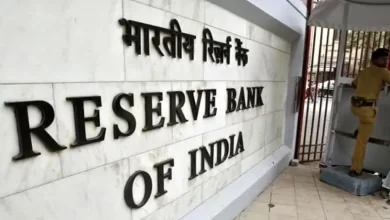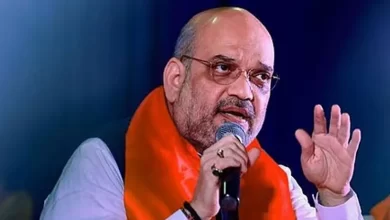Nizam banked on the Dickie Bird plan, but Nehru, Patel blocked it

New Delhi: The devious Nizam was hoping that he could plead to Mountbatten’s sensibilities, his take was that the original Dickie Bird Plan would save him and Hyderabad. But this was brought down by Nehru and V.P. Menon in sync with Sardar in Shimla, where the construct of the final Independence Plan was architected.
The original Mountbatten Plan, which the Nizam referred to and parts of which suited him to a T, would have established the following States or State areas in India:
(1) North West Pakistan, covering Western Punjab, Sind, and possibly the North West Frontier and Baluchistan, with a population of 25 million (18 million Muslims).
(2) North East Pakistan, covering Eastern Bengal and the Sylhet district of Assam, with a population of 44 million (31 million Muslims). These two areas, divided by a thousand miles, would constitute the Pakistan State or Federation, with a population of 70 million.
(3) The Indian Union or Hindustan, covering the rest of British India, with a population of 225 million.
(4) The Princes’ States, covering two-fifths of the area of India with a population of 93 million, or a quarter of the total, would join one or other federation, or possibly, in the case of one or two larger states, such as Hyderabad and Travancore, according to their present declared intentions, proclaim their separate independence.
Even earlier in the countdown to the encircling of Hyderabad, Kashinathrao Vaidya, a lawyer and Hyderabad- based Congress politician (who subsequently became the first speaker of the assembly), set alarm bells ringing by sending a series of telegrams to Lord Mountbatten, Nehru, Patel and Menon dated November 24 and 25.
The two telegrams, in brief, said: “Pray that Hyderabad negotiations should be finally terminated and Hyderabad should accede to Indian Dominion. If this is not possible now, Status Quo agreement should be executed on the condition that the Indian Army should not be removed from Bolarum and Secunderabad and a responsible government established. Proper steps should be determined to implement it early. Nothing less than this will satisfy the people here.
“Interim period is being utilised to crush Hindus. Preparations on a large scale are being made for the purpose. Hindus relying on the Indian Dominion Army only … Most provocative and fiery speeches made by Majlis Ittehadul Muslimeen leaders instigating Muslims to fight the last kafir in the State.”
Vaidya had given a communal spin to his argument and he was happy that on November 26 he issued the following statement to the press: It is gratifying to learn that the Hyderabad delegation has accepted the Standstill Agreement with India.
Vaidya warned his party bosses in Delhi about Syed Mohd Kasim Rizvi, president of the Majlis who was busy giving inflammatory speeches all over the state. A very striking extract dated November 25, 1947, from the Urdu daily ‘Ittehad’ owned by Rizvi was also sent to the Congress leadership. Rizvi had just returned from Delhi after confabulations with the same leadership.
The sum and substance being: “Sardar Patel wanted to speak to me in the same tone as he is used to talking to others. But never in his life had he an occasion to hear facts as I have given him. I was told that Mirza Ismail (the PM of Hyderabad) was willing to join the Indian Union. I was also told that the Nawab of Chahatari, Sir Walter Monckton and Sir Sultan Ahmed had agreed to the demands of the Indian Union, but I ask how are these outsiders entitled to decide the fate of 35 lakh Muslims of Hyderabad? I want to make it clear that the Indian Union will land in difficulties if it does not make an agreement with Hyderabad, for Hyderabad is not Kashmir. Not only four crore Muslims of the Deccan are with Hyderabad, but six crore Muslims of Pakistan are with Hyderabad … .”
The ante was being upped, the mercury was rising. The threats presented a clear danger of a communal flare- up in Hyderabad State given that Muslims held the whip hand despite being a minority in numbers. The same day, Mohd Abdul Raoof, chairman of the Committee of Direct Action, addressed a public meeting saying pretty much the same thing, highlighting that Sardar Patel was trying to enslave Hyderabad, and exhorted the audience saying every Muslim should be ready to sacrifice his life as a soldier.
The Razakars were born out of this movement of the Majlis. Kasim Rizvi’s speech on November 21, 1947, was nothing short of seditious and communal. “The history of Islam is repeating itself,” he said. “The blood of martyrs at Karbala is going to appear as twilight on the horizon of the new Deccan, this land is to be the battlefield of Karbala. Now every Mussalman has to acquire ‘life eternal’ by becoming the Prophet’s grandson Hussain, by dying for right, truth and liberty. … Need neither Lord Mountbatten frighten me with India’s military might, nor Sardar Patel threaten me with his destructive power …
“Qaid-e-Azam (Jinnah), have not these helpless and destitute four and half crore Muslims voted for your leadership? How have you left them friendless and forlorn for the sake of the governor-generalship of the other six crore. Having secured the freedom charter penned in gall, is there no value for our blood? Having won Pakistan, is it not your duty to protect us?”
Mohd Abdul Raoof on November 25 spoke on similar lines. “One lakh Muslims have registered themselves as soldiers of jihad and are prepared to sacrifice their lives (Razakars),” Raoof said. “Mr Patel should know that he is not wresting the independence of Hyderabad but is putting the bond of slavery around our necks. Hindu Union is trying to frighten the Muslims with its arms, ammunition and mercenary forces, but the Deccan has 35 lakh soldiers who are prepared to pay with their lives.”
Believed to be one of the richest men in the world, His Exalted Highness, Rustam-e-Dauran, Arastu-e-Zaman, Lt. Gen. Muzzafar-ul-Mulk Sipah Salar, Faithful Ally of the British Government, Nizam-ud-Daula, Nizam-ul-Mulk Asaf Jah was first among equals as far as Indian Princes were concerned. There was no way he was going down without a fight.
Frank Moraes writes in ‘Jawaharlal Nehru: A Biography’: “So high was their own estimation of their strength and so low their opinion of the Indian Army’s morale and fighting capacity that the Rizvi’s Ittehad boasted that the Indian forces could be held for any period of time — from three to nine months. In the interval, Hyderabad hoped for the intervention of Pakistan and the sympathy of her friends, high among them whom the Nizam rated Winston Churchill. But midway in this journey, Jinnah passed away and Sardar Patel saw his opportunity to swing in with ‘police action’.
In this game of going back and forth, through a letter dated November 29, 1947, the Nizam, writing to Lord Mountbatten, accepted the Standstill Agreement with the Indian Dominion.
He wrote: “I regret that we have not been able to reach a final agreement as to the eventual nature of the association between Hyderabad and the Dominion of India.
“As Your Excellency knows, I have not been prepared to contemplate accession to either Dominion, but short of this, I have been ready to negotiate with your Govt upon any other basis. I am now enclosing a Standstill Agreement which I am prepared to execute if Your Excellency’s Govt is also prepared to sign it.
“It is a disappointment to me that after such protracted negotiations we are unable to do more for the present than carry on existing arrangements subject to such changes as the departure of Paramountcy imposes. On the other hand it is essential to put an end to the present state of uncertainty and the fact that the agreement now to be executed is to endure for a year means that both governments will be able to turn their attention more fully to the problems of administration without constant preoccupation with the question of our constitutional relationship.
“To that question, we shall eventually have to return, but I am confident that if during the next year our association in accordance with the terms of the Standstill Agreement is marked by goodwill on both sides, we shall be more likely at the end of that period to read a satisfactory agreement as to the nature of our long term association. … By executing this Standstill Agreement I am in no way permanently prejudicing my rights as an independent sovereign, but I am of course conscious that I am in some important respects suspending the exercise of certain of those rights during the currency of the agreement.
“It is plain that an agreement in this general form will necessitate a good deal of adjustment in regard to particular arrangements. In this connection I learn that your Govt is prepared as soon as possible to negotiate with mine on arrangements for the posts, telegraphs and telephones within Hyderabad to be worked as a Hyderabad system in harmony with the Dominion system.
“There are in addition problems about the Hyderabad forces both in regard to the troops and their equipment, which our governments will need to discuss in the light of the fact that on August 15, 1947, the Hyderabad forces and police available for the maintenance of internal order could no longer rely upon the backing of the troops stationed in and near the State by the Paramount Power.”
The Nizam went on to deal with several perceived outstanding issues such as Dominion troops, currency and coinage, postal rights, passports, arms, equipment and ammunition, among other things. He ended on what was clearly a sticking point given what Vaidya had written to the Congress leadership.
He wrote: “I know well Your Excellency’s interest in all steps taken to abate communal antagonism. It may therefore be of interest to you to know that in conformity with the earlier declarations on my part, I propose to issue a FIRMAN in the immediate future expressing my firm resolve to protect the lives, rights and interests of all my subjects alike, irrespective of caste and creed.”
The Governor General responded the same day with a letter to the Nizam of Hyderabad and Berar and it was terse: “While my government and I note that your Exalted Highness has no intention of acceding to Pakistan, we very much regret that you should have been unable to execute an Instrument of Accession with India. Both my Minister for States in his statement of July 5 and I myself in my speech of July 25 to the representatives of the States have made it clear that it is the earnest desire of the Govt of India to maintain the sovereignty of the States and to work with them as full partners in the administration of the three subjects proposed for accession … Placed as Hyderabad is, its interests are inextricably bound up with those of India; and my Govt hopes that before the present agreement expires, it will be possible for Hyderabad to accede to India.”
This proved to be abortive, although the Nizam agreed to hold a plebiscite on the question of accession, which was formally demanded by the Government of India as the only democratic solution to the problem.
But when it became clear that the alternative solution of accession to India was not acceptable to the Nizam, the Government of India turned down the offer made by the Nizam to hold a plebiscite in Hyderabad, even before it could be done.
The Nizam’s government justifiably saw in this an attempt made to pre-judge the entire question, as in its view, there would be left not much need to hold a plebiscite after Hyderabad had provisionally acceded to India, even if subject to reservations postulated by the Government of India.
A panicky Pakistan reacted on expected lines. To highlight the recent accession of Kashmir to India, which it believed was flawed and done with a sleight of hand, it chose to focus on the India-Hyderabad negotiations that were underway. Their version as always came with a strong underpinning of caustic sarcasm.
In Pakistan’s view, the Government of India knew that possession was nine-tenths of ownership in law and that it had secured in one case — Jammu & Kashmir — actual possession by throwing to the winds the principles of geographical contiguity and economic, religious and cultural links, which were admitted factors to determine accession of a state to one or the other Dominion. And it had been achieved with a fair measure of success.
The Government of India had hoped, according to Pakistan, to repeat the same tactics in Hyderabad with the same results.
It said: “Recent happenings in Hyderabad are also reminiscent of the tactics employed by India in Kashmir. They have invaded the country and sought to post their forces there to be followed by the farce of ascertaining the will of the people on the question of accession. In Kashmir, so in Hyderabad, the actual accession of the posting of the troops in the State must precede the holding of a plebiscite on that very question of accession. This certainly has the merit of consistency, which may also be claimed for their attitude.
“In the two cases, Hyderabad has a Muslim Ruler, though the population is overwhelmingly Hindu, and is surrounded by Indian territory and hence must go to India.
“In the case of Kashmir, the overwhelming majority of the people are Muslim and the State is surrounded by Pakistan, but that does not equally matter, as Sheikh Abdullah favours Kashmir’s accession to India and the Ruler is Hindu, but you cannot have the cake and eat it too. YOU CANNOT DECEIVE ALL THE PEOPLE ALL THE TIME AND HENCE WE FIND THAT THE INDEPENDENT WORLD PRESS HAS CONDEMNED INDIA FOR THIS WANTON AND UNABASHED AGGRESSION.
“In the case of Kashmir, the Govt of India knows that with their twin instruments, namely, Indian troops and the administration presided over by Sheikh Abdullah, they can prevent indefinitely the holding of a plebiscite and if it did take place in the near future, he could count on the same forces being able to reduce it to a farce and mockery and a decision favourable to India to be thus secured.”
This representation ran into pages and pages and was primarily a litany of complaints under the titles — political and economic reasons — and a diatribe against India for having secured Hyderabad and Kashmir “using underhand means”.
(Sandeep Bamzai is the Editor-In-Chief of IANS and author of ‘Princestan: How Nehru, Patel and Mountbatten Made India’ (Rupa), which won the Kalinga Literary Festival (KLF) Book Award 2020-21 in the non-fiction category.)







